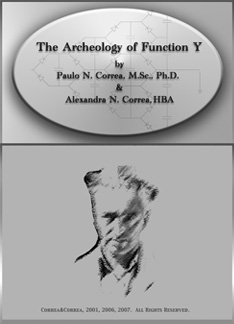![Akronos logo]](/images/akronos_wheel.jpg)
|
Akronos Publishing Concord, ON, Canada www.aetherometry.com |
![Akronos logo]](/images/akronos_wheel.jpg)
|
Akronos Publishing Concord, ON, Canada www.aetherometry.com |

The rediscovery of the ORgone motor:
(1) The archeology of Function Y
by Correa, Paulo N. & Correa, Alexandra N.
Published in July 2006. 68 pages.
Experimental Aetherometry, Vol. 3
Monograph AS2-18
Price: US $35
Chapter 1 of the book The (Re-)Discovery of the Orgone Motor
|
ABSTRACT
This communication is the first of a series where the authors rediscover and reconstruct the steps Reich would likely have taken to discover his Orgone Motor. Beginning by building upon successive modifications of the thyratron pulse amplifier of the Herbach & Rademan CMB-3A GM scaler, the authors succeed in driving AC induction motors (drag-cup and squirrel cage) from the final distillation of the said circuit. This is accomplished by employing diverse thyratron inputs - a signal generator, a PAGD generator, a TRD pulse generator - or by driving it directly from a simple antenna (ie without any intermediate plasma pulsation, which the authors take to mean without a parallel plate tube operating, autogenously or not, in either the pulsed TRD or AGD regimes) designed to pick up ground-transmitted dampened wave (DW) impulses from a Tesla coil. The first part of this communication demonstrates, therefore, how - from comparable inputs - Reich could have efficiently run an AC induction motor from the output of a modified CMB-3A pulse amplifier circuit. In the second part the Correas reconstruct what they believe is the archaeology of the Function Y whose secret Reich took to his grave, but which he and others described as being critical for the operation of the Orgone Motor. The authors believe that this Function Y corresponded to a thermionic full-wave divider of the Delon, Greinacker and Latour circuit, but applied, as it has been in the last decade, in the manner of a dual diode sensor circuit in RF power meters. The principle has long existed for AM loopstick antenna circuits, and can be regarded as the preferred method for full-wave rectification. The authors then proceed to a comparison of their experimentation with diverse couplings designed to tap the power output by Tesla coils. They examine (1) direct electric motor couplings, (2) indirect electromagnet motor couplings, (3) Function Y or full-wave-divider circuits and (4) the direct thermionic half-wave rectification circuit. The Correas conclude that the most efficient circuit is indeed a Y-type one, but also demonstrate that none of these solutions actually tap the massfree electric energy output from a Tesla coil. Even the Y-type circuit only appears to tap the massbound charge flux of the TC secondary. In the follow-up communications, the authors provide the solution to this apparent impasse of all 4 types of couplings examined herein. |